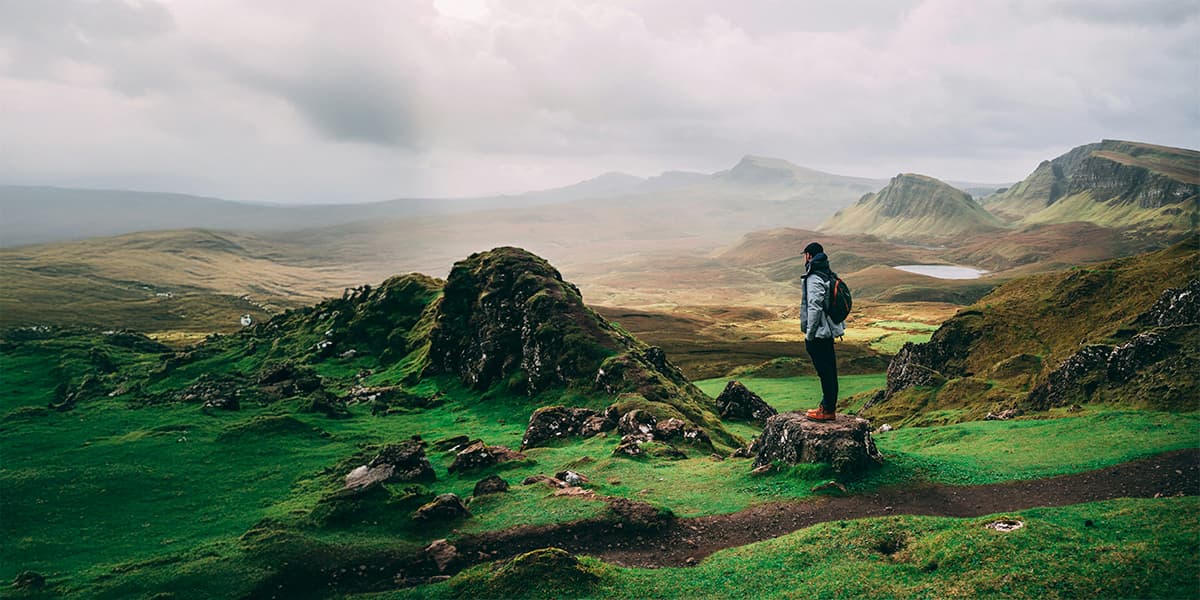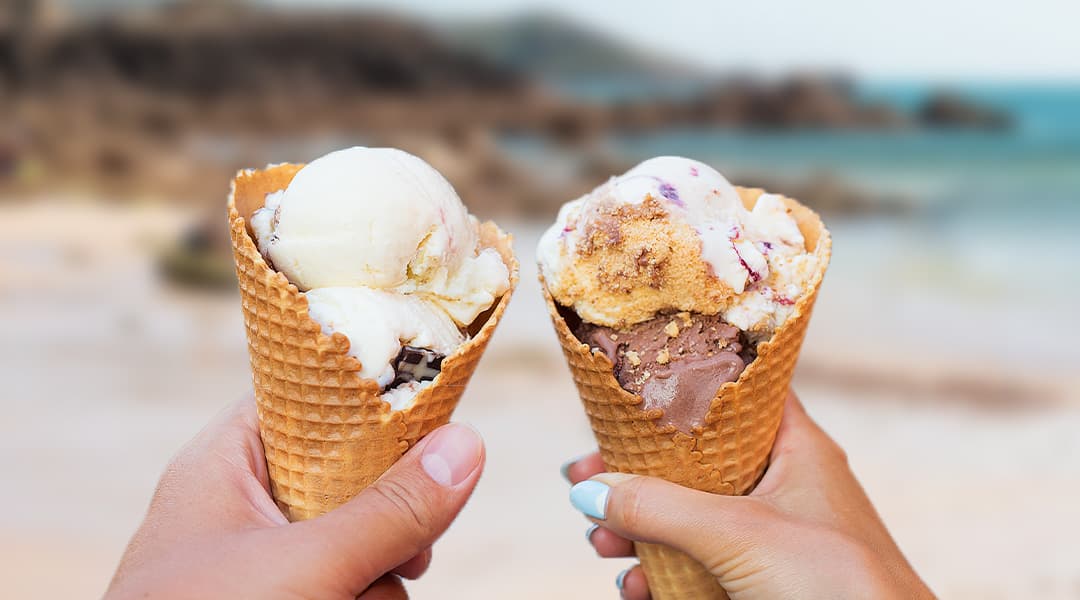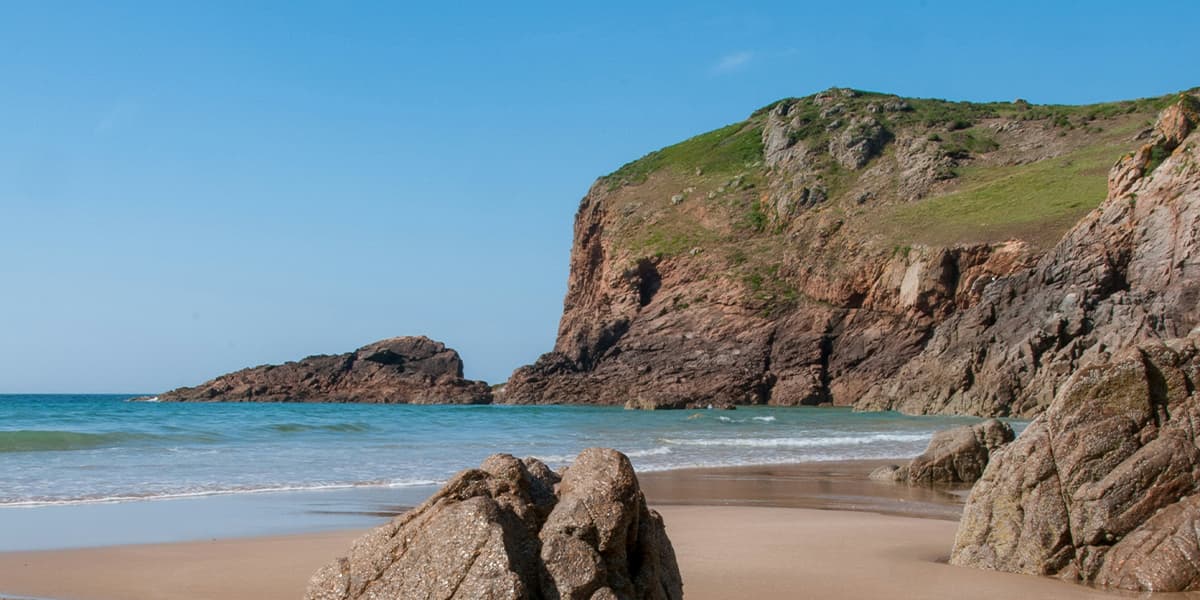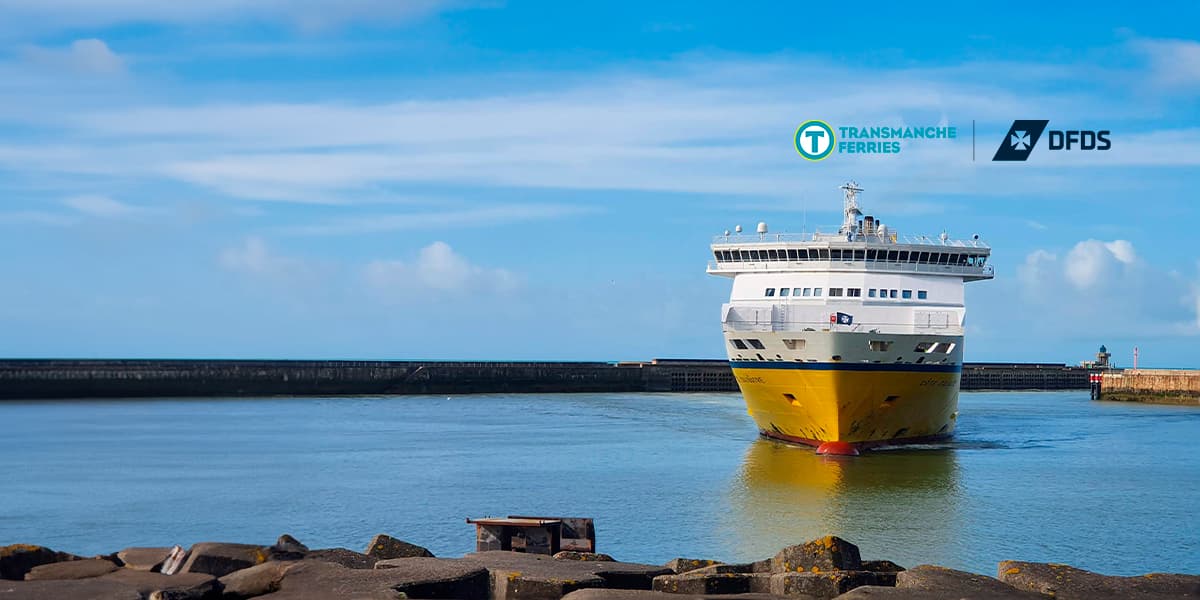Outdoor Activities: Explore Scotland in the Wild
Hiking
Scotland is a hiker's paradise. From coastal paths to deep valleys, each route reveals unique panoramas. The West Highland Way (154 km) is one of the most famous, crossing lochs, mountains, and picturesque villages. For a more accessible hike, the hills of the Scottish Borders or the trails around Arthur's Seat in Edinburgh offer superb views. Among the iconic peaks, Ben Nevis attracts seasoned hikers. Its ascent, although demanding, offers spectacular views of the surrounding Highlands. For those who enjoy gentler hikes, the trails around Loch Lomond or in the Cairngorms offer accessible and equally magnificent alternatives.
Kayaking and Canoeing
Paddling the Scottish waters allows for total immersion in nature. The Great Glen Canoe Trail connects several lochs over nearly 100 km, while sea kayaking in Argyll or around the Isle of Skye allows you to approach secluded coves and observe marine wildlife. Among the lochs best suited to this activity, Loch Tay appeals for its length and rolling landscapes. Loch Morlich, located in the Cairngorms National Park, is popular for its sandy beach and calm waters. Loch Awe, with its islets and Kilchurn Castle as a backdrop, offers an immersive experience combining nature and heritage.
Cycling and Mountain Biking
Exploring Scotland by bike allows you to discover its landscapes at a slower pace, soaking up the diversity of its terrain. The winding Highland roads, rugged coastlines, and lush valleys provide an ideal playground for cyclists. One of the most iconic routes is the North Coast 500, a loop of over 800 kilometers that crosses spectacular panoramas, including wild beaches, remote lochs, and majestic mountains.
For adrenaline junkies, Scotland also offers dedicated mountain biking facilities. The 7stanes centers, located throughout the south of the country, are renowned for the quality of their trails. In Glentress, for example, the trails wind through dense forests and offer courses suitable for all levels, from beginners to experienced mountain bikers. These well-equipped locations, with rental services, cafes, and rest areas, make them ideal destinations for a day or weekend spent in the great outdoors.
Wildlife Watching
Scotland is home to a rich and varied wildlife. Deer, golden eagles, otters, seals, and dolphins can all be seen in their natural habitat. The Isle of Mull is particularly renowned for bird and marine mammal watching. In the Highlands, it's not uncommon to spot red deer crossing the glens in the early morning, especially in the areas around Glen Coe or the Cairngorms National Park. Birdwatching enthusiasts can head to Handa Island, to the northwest, where puffin colonies nest on the cliffs during the summer. Along the Moray Firth coast, near Inverness, dolphins can be observed from land, particularly at Chanonry Point, one of the best spots in Europe for this activity. Otters, more discreet, can sometimes be spotted in peaceful lochs or estuaries, especially early in the morning or at dusk. This natural wealth makes Scotland a prime destination for wildlife lovers, with numerous guided excursions available to maximize sighting opportunities while respecting the environment.
Culture and Traditions: The Scottish Soul
Whisky
With over 140 distilleries, Scotland is the birthplace of whisky. Each region produces distinct styles: fruity in Speyside, peaty in Islay, balanced in the Highlands. Visiting a distillery allows you to discover the production process and taste local vintages. In Speyside, whisky is distinguished by its smoothness and fruity notes. Houses like Glenfiddich and The Macallan embody this style, with expressions aged in sherry casks that bring roundness and complexity. In Islay, the peaty character is omnipresent: Laphroaig, Ardbeg, and Lagavulin offer powerful, salty, and sometimes medicinal whiskies that reflect the island's harsh climate. In the Highlands, balance is key. Dalwhinnie, perched at an altitude of over 300 meters, produces a delicate whisky with notes of honey, while GlenDronach seduces with its deep, spicy aromas. Some distilleries, such as Aberfeldy, stand out for their exceptional natural settings, nestled along rivers or surrounded by forests, adding an almost contemplative dimension to the experience.
Music and Ceilidhs
Traditional Scottish music is omnipresent. In pubs, live sessions combine fiddle, guitar, and bagpipes. Ceilidhs, popular dances, are an opportunity to dance and share a friendly moment with the locals. In Inverness or in the Highland villages, it's not uncommon to stumble upon an impromptu ceilidh in a village hall, where generations mingle around lively dances like the Gay Gordons or the Strip the Willow. Musicians often play without sheet music, passing on the tunes from memory in a warm and inclusive atmosphere. Even in big cities, venues like Ghillie Dhu in Edinburgh or Òran Mór in Glasgow regularly host evenings where tradition meets modernity.
Festivals and Events
Scotland hosts numerous events throughout the year. The Edinburgh Fringe Festival in August is the world's largest performing arts festival. The Highland Games, held in several villages in the summer, combine sports, music, and crafts. The Six Nations Championship, in February and March, transforms Edinburgh into a rugby cathedral with a vibrant atmosphere at Murrayfield Stadium.
In January, the country pays tribute to its national poet with Burns Night, an evening of reciting Robert Burns' verses, eating haggis, and raising a glass of whisky in his honor. In December, Hogmanay, New Year's Eve, is one of the most spectacular in Europe. In Edinburgh, the festivities last several days with open-air concerts, torchlit processions, and fireworks. Traditions vary in the villages, but the spirit of renewal and conviviality remains omnipresent.
Scottish Cities: Between History and Modernity
Edinburgh
A majestic capital, Edinburgh captivates with its architecture and atmosphere. The castle dominates the city from its volcanic promontory, while the Royal Mile connects the main historical sites. The city is also a cultural center with its museums, galleries, and festivals. Walking through the cobbled streets of Dean Village, you'll discover a peaceful neighborhood on the banks of the River Leith, far from the tourist hustle and bustle. Climbing Arthur's Seat, an ancient volcanic hill, offers panoramic views of the city and its contrasts. The National Museum of Scotland, located on Chambers Street, offers a fascinating immersion in Scottish history, science, and culture, with exhibitions ranging from Celtic relics to contemporary innovations.
Glasgow
A creative and dynamic city, Glasgow is renowned for its music scene, Victorian architecture, and warm atmosphere. The Kelvingrove Art Gallery and Museum, the Gothic cathedral, and the many lively pubs make it a must-see. In the Finnieston district, former warehouses have been transformed into art galleries, restaurants, and trendy bars, illustrating the city's ability to reinvent itself. The Riverside Museum, designed by architect Zaha Hadid, traces the history of transport with a modern and immersive scenography. Glasgow is also a city of concerts: venues like the Barrowland Ballroom and King Tut's Wah Wah Hut have hosted legendary bands, and the atmosphere is always electric.
Small Towns and Villages
Far from the big cities, Scotland's small towns offer authentic charm. St. Andrews, the birthplace of golf, Pitlochry with its wooded landscapes, and Oban, the gateway to the islands, are all places to discover for their heritage and natural setting. Off the beaten track, villages, often overlooked by traditional itineraries, allow you to discover a more intimate Scotland, where every street and every landscape tells a story. Like Tobermory, on the Isle of Mull, its colorful houses lined up along the harbor offer a peaceful and picturesque atmosphere. In Dunkeld, nestled on the banks of the River Tay, you'll discover a partially ruined cathedral surrounded by forests, ideal for a contemplative stroll. Further north, Ullapool captivates with its maritime atmosphere, local art galleries, and departure points for the wildest Highlands.
Castles and Iconic Places: Picture-Postcard Scotland
Scotland has hundreds of castles, each with its own story. Edinburgh Castle, Urquhart Castle on the shores of Loch Ness, and Dunnottar Castle perched on a cliff are among the most impressive. These sites offer spectacular views and immerse visitors in Scottish history. Among the most remarkable castles, Eilean Donan stands out for its location at the confluence of three lochs, creating a picture-postcard image. Stirling Castle, steeped in history, was the scene of numerous battles and royal residences. Glamis Castle, associated with Shakespeare and local legends, impresses with its architecture and gardens. These places are not only relics of the past, but also living witnesses to Scottish history.
Film has also contributed to the renown of certain sites. The Glenfinnan Viaduct, made famous by the Harry Potter films, attracts fans from around the world. Other locations have served as sets for productions such as Skyfall and Braveheart, reinforcing the country's mythical aura. For example, Doune Castle was used as a setting for Monty Python and the Outlander series, while Blackness Castle was used to represent Fort William. Dunnottar Castle, with its sheer cliffs, has inspired scenes from historical films. These locations, made famous by the cinema, allow visitors to immerse themselves in the world of their favorite films while discovering authentic sites.
Scotland Through the Seasons
Each season transforms Scotland and offers unique experiences. Spring sees nature reborn, with flowing waterfalls and active wildlife. Summer is ideal for long days of exploration, festivals, and water activities. Autumn brings color to the forests and valleys, ideal for hiking and photography. The more austere winter reveals dramatic landscapes and allows for stargazing in areas protected from light pollution. Northern Scotland lies at the same latitude as Stavanger in Norway and Nunivak Island in Alaska, making it a prime area for viewing the Northern Lights (clear nights from January to March are best).
Traveling with DFDS: the gateway to Scotland
To explore Scotland in complete freedom, DFDS offers an overnight crossing between Amsterdam and Newcastle. On board, you'll enjoy a comfortable cabin and arrive rested in the morning. Newcastle is less than two hours from Edinburgh, making it an ideal gateway to Scotland. Traveling with your own car allows you to explore remote regions, follow your own itinerary, and fully enjoy the Scottish landscapes without constraints.
Conclusion
What to do in Scotland? The answer is multiple: hike in the Highlands, enjoy a whisky by the fire, attend a festival, or simply gaze at a loch at sunrise. Visiting Scotland means immersing yourself in a country rich in contrasts, accessible all year round. Plan your trip, board a ferry, and let yourself be captivated by the Scottish spirit.




